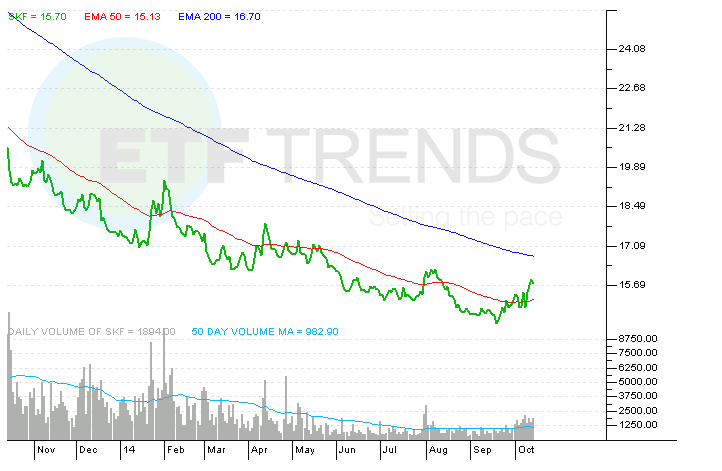ETF Splits
Post on: 16 Март, 2015 No Comment

How Does and ETF Split Impact your Portfolio
You can opt-out at any time.
Since ETFs are mini-portfolios that trade like stocks, they are also susceptible to regular splits as well as reverse splits. So as an ETF investor, it’s important for you to understand the ETF splitting process and how it impacts your portfolio.
What is an ETF Split?
An ETF split is the process of taking the amount of outstanding shares and doubling the volume, while splitting the price. Typically ETFs splits are two-to-one, but they can occur on different ratios such as three or four to one.
How Does an ETF Split Work?
For example, let’s say an ETF is trading at $100 and has 500,000 outstanding shares. If a two-for-one ETF split is announced, the stock price (barring any news or other market factors), will go to $50 (ergo the split) and the number of outstanding shares will go from 500,000 to 1,000,0000 (doubling).
So, if you own one share of the ETF, your portfolio is worth $100 ($100 x 1 share). After the split, your new shares will only be worth $50, but you will have 2 shares instead of one. So your portfolio value will still be worth $100 ($50 x 2 shares). So it’s important to note that your overall portfolio value won’t change, but you will have more shares at a lower price.
And as I said, splits don’t always occur on a two to one ratio. Sometimes ETFs can split three or four ways. So using our same example, let’s say the split was four-to-one. You would now own 4 shares at $25, but your total portfolio would still be worth $100 (4 shares x $25).
Why do ETFs Split?
In most cases, ETFs split to make the price more attractive for potential investors. If you could by an ETF for $50 or $100, which would you choose? I know there are many factors involved – amount of outstanding shares, research, market conditions, etc – but even still, if an investor likes a particular fund, it looks more attractive at $50 that $100 and he can buy more shares within his budget at $50 than he can at $100.
What is a Reverse Split?
Reverse splits are the opposite of regular ETF splits, but do get a little trickier. Let’s say you own 4 shares of an ETF that is trading at $10. Your total portfolio is worth $40 (4 shares x $10). Then a reverse two-for-one split is announced. So you’re 4 shares become 2 shares (opposite of a regular split) and the price of each share goes to $20 (doubling). So your portfolio is still worth $40, you just have less shares.
What if the Reverse ETF Split Isn’t Even?
In some cases the spilt may not be evenly divisible by the amount of shares in your portfolio. So again, referring to our example, if a three for one split is announced, three of your shares will go to one and your extra (fourth) share will actually be a “third” of a share after the reverse split. But since you can’t have a third of a share in your account, you will get the cash equivalent for that third.
So using our example — you own 4 shares at $10. A three-for-one split is announced. You now own one share at $30 and a third of a share, which is theoretically worth $10 ($30 / 3). But instead of carrying a third of a share, you will just get $10 cash in your portfolio. So your ETF share is worth $30 and you have $10 in cash. Total value = $40 ($10 cash + $30 share). Total value is still the same post-reverse split as it was pre-split.
Why Do Reverse Splits Happen?
Typically when the price gets too low for an ETF, the provider may announce a reverse split to bring the price back up to a more “tradable” level. Or the fund may reverse split to make it look more valuable in an investor’s eyes or even avoid going to low and getting delisted. Some ETFs actually have price levels that trigger a reverse split for these very reasons.
So the bottom line is that a regular or reverse ETF split will not impact the total value of your position, but it will change the amount of shares you own and the trading price. So if you have a fund in your portfolio that has announced a split, make sure you understand how it will impact the total value of your positions and your ETF investing strategy .
Also, before making any ETF trades, you may want to look back at the fund history and see if the ETF has ever split or reverse split. And as always, understand the risks of trading an ETF or any asset. Be sure to consult your broker or a financial professional if you have any questions or concerns.














